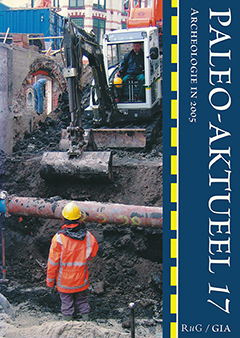De palaeoecologie van Duurswold (Gr.): vroeg-Holocene landschapsontwikkeling
Samenvatting
The palaeo-ecology of Duurswold: the evolution of the Early Holocene landscape in the low-lying area east of the city of Groningen. The pollen diagram Rijpmakanaal, taken from a site in the lowlying area east of the town of Groningen, shows vegetation developments mainly between 9000-4000 BP. From the Early Boreal until the Early Atlantic period, seepage water produced locally wet conditions. The aquatic species composition indicates water rich in carbonates and phosphates, which is slightly brackish and also contains some ammonia. Grasses, cypergrasses and horsetails predominated in shallow, marshy areas. An increase in precipitation and rising groundwater levels from around 7300 BP gave rise to peat formation, in which alder carr predominated. Around 4500 BP marine influence became stronger, but until c. 4000 BP (the final stage of the diagram) the marine impact remains restricted, due to improved drainage of the seaward fringes of the peat area. The drainage favoured the local expansion of birch. Regional peat formation started a little after 5000 BP. Wood remains of yew and pine recovered from arable land at the location Zwartdam, 2 km east of Rijp-makanaal, indicate the presence of these conifers in the Early Subboreal. Palynologically both taxa are poorly represented during the Early Subboreal phase. These conifers originally grew on the Pleistocene sand before the accumulation of peat started. Mesolithic occupation of the coversand areas in the region apparently ended around 7300 BP. The wetter conditions caused by increased precipitation may have forced Mesolithic man to abandon the relatively low-lying plains and to move towards the better drained brook valleys.

